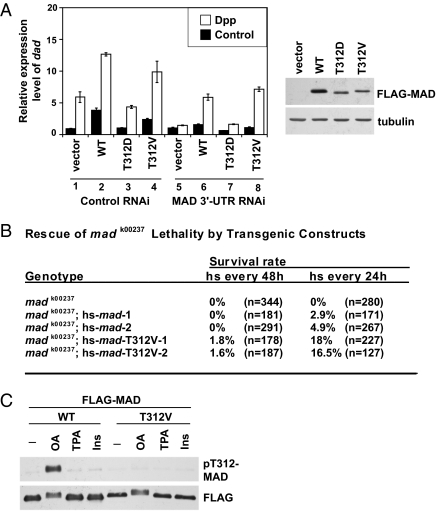Fig. 2.
α-helix 1 phosphorylation suppresses biological functions of MAD. (A) Stable S2 cell lines expressing WT and mutant MAD were treated with indicated RNAi to deplete endogenous MAD. After Dpp or vehicle (control) stimulation, the mRNA level of dad was measured by quantitative real-time PCR, with Rp49 as the standard (mean ± SD). (Right) The expression levels of MAD constructs are shown. (B) Heat shock–driven WT or mad T312V transgenes were tested for their ability to rescue the lethality caused by madk00237. Two kinds of heat shock treatments were used (e.g., once every 24 or 48 h). The percentages of progenies with straight wings are shown, which reflect rescue of the lethality associated with homozygous madk00237 (survival rate). A complete rescue is expected to result in 33.3% of the progenies having straight wings. n is the total number of curly-winged and straight-winged progenies scored in each case. (C) S2 cells expressing WT or FLAG-MADT312V were treated with OA (125 nM), TPA (5 μM), or insulin (300 nM) for 1 h. FLAG-MAD was immunoprecipitated and analyzed using the indicated immunoblots.

